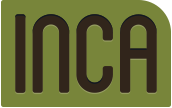
The European Innovation Partnership on Active and Healthy Ageing (EIP on AHA)
The European Innovation Partnership on Active and Healthy Ageing (EIP on AHA), set up in 2012, gathers stakeholders at EU, national and regional level from the public and
private sector across different policy areas. Together they share knowledge and expertise on common interests and engage in activities and projects to find innovative solutions
that meet the needs of the ageing population.
Under the framework of the EIP on AHA, the Action Group on falls prevention works to improve the quality of life and health outcomes of older people by promoting falls
prevention initiatives for older people, adjustments in their direct surrounding environments and improvements in the healthcare system.
https://webgate.ec.europa.eu/eipaha/
ND-02-14-815-EN-N
WHAT ARE FALLS?
Falls prevention for older people
A European Innovation Partnership on Active and Healthy Ageing priority
WHAT LEADS TO A FALL?
WHO global report on falls prevention in older age WHO
THE IMPORTANCE OF FALLS IN OLDER PEOPLE
Falls are commonly defined as “inadvertently coming to rest on the ground,
floor or other lower level, excluding intentional change in position to rest on furniture,
wall or other objects”.
Regarding falls, different understandings exist:
Older people tend
to describe a fall
as a loss of balance
Health professionals generally
refer to events leading to injuries
and ill health
Risk factors associated with falls are identifiable, allowing us to take appropriate action.
of PEOPLE AGED 65+
FALL, mostly in the home
environment
Each year
28-35%
of mild to
SEVERE INJURIES
Falls lead to
20-30%
DIE WITHIN A YEAR
due to complications of a
hip fracture
Aſter a fall
20%
BIOLOGICAL RISKS FACTORS ENVIRONMENTAL RISKS FACTORS
SOCIO-ECONOMIC RISK FACTORS
Age
Disease-related conditions
Alcohol consumption Sedentary behaviour
Emotional state
Medication intake
Social conditions
Economic status
Gender
BEHAVIOURAL RISK FACTORS
Potential home hazards
- Low education
- Lack of social interactions
- Inadequate housing
Surrounding environment
- Narrow steps
- Slippery surfaces
- Insufficient lighting
- Poor building design
- Cracked pavements
- Lack of lighting in public spaces
WHAT ARE THE CONSEQUENCES OF FALLS?
WHAT ARE WE DOING TO PREVENT FALLS IN OLDER PEOPLE?
FOR PATIENTS
The European Innovation Partnership on Active and Healthy Ageing (EIP on AHA) supports public
and private actors across the EU to improve the prevention of falls in older people through:
INFORMATION CAMPAIGNS
to improve the awareness of older people and their families
that falls are not inevitable and that prevention actions
are possible
PREVENTION ACTIONS
focused on the promotion of healthy lifestyles
(e.g. non-smoking, moderate alcohol consumption, physical
activity and nutritionally adequate regimes)
SCREENING METHODS
to identify individuals at higher risks of falling who will
benefit from tailored interventions
ENVIRONMENT MODIFICATIONS
to improve living conditions:
• Age-friendly design of private housing or public environment
(e.g. railings, grab bars, slip-resistant surfaces, etc.)
• ICT (Information and Communications Technology) solutions
for falls detection and prevention (e.g. home monitoring)
FALLS PREVENTION
COOPERATION AMONG HEALTH AND
CARE PROFESSIONALS
to tailor interventions to the patient
- Lower quality of life
- Increased anxiety and depression
- Decreased activity and mobility
- Reduced social contact
- Higher medication use
- Increased dependence on medical
and social services and informal
carers
- Long-term physical disability,
severe dependency or fatal injuries
- Substantial costs of treatment
and rehabilitation
- High number of older people
placed in a care home aſter a fall
- Loss of productivity
(e.g. lost income) of individuals
or family care givers taking care
of fall-injured person
FOR HEALTH SYSTEMS FOR THE ECONOMY
HOW INTERVENTION REDUCES THE NEGATIVE CONSEQUENCES OF FALLS
INTERVENTION
NO INTERVENTION
FALL
Nutritional intervention
Home monitoring
Balance training
Fall detection
Rehabilitation Monitoring/educationScreening and assessment
CRITICAL
ZONE
Slower rehabilitation
fitness
time
Fitness increases with intervention, in the event of a fall there is a small and short time decrease in fitness.
Fitness decreases without intervention. Further to a fall there is large decrease in fitness under critical level which
results in stable low fitness level under critical level.
 Scroll
Scroll